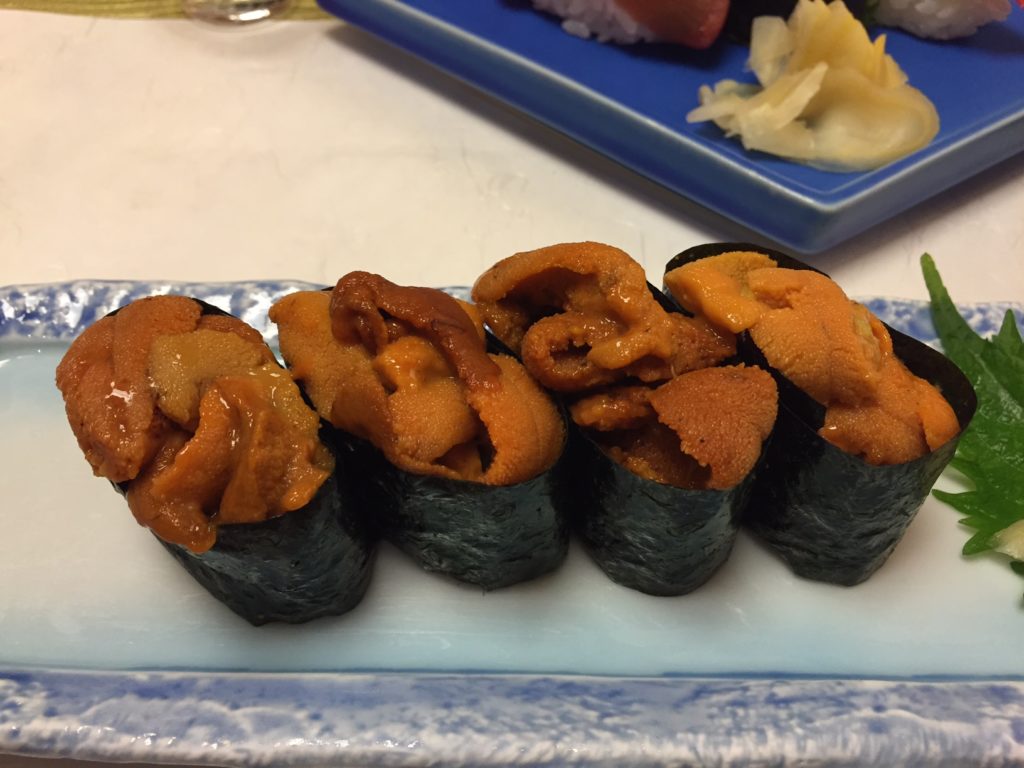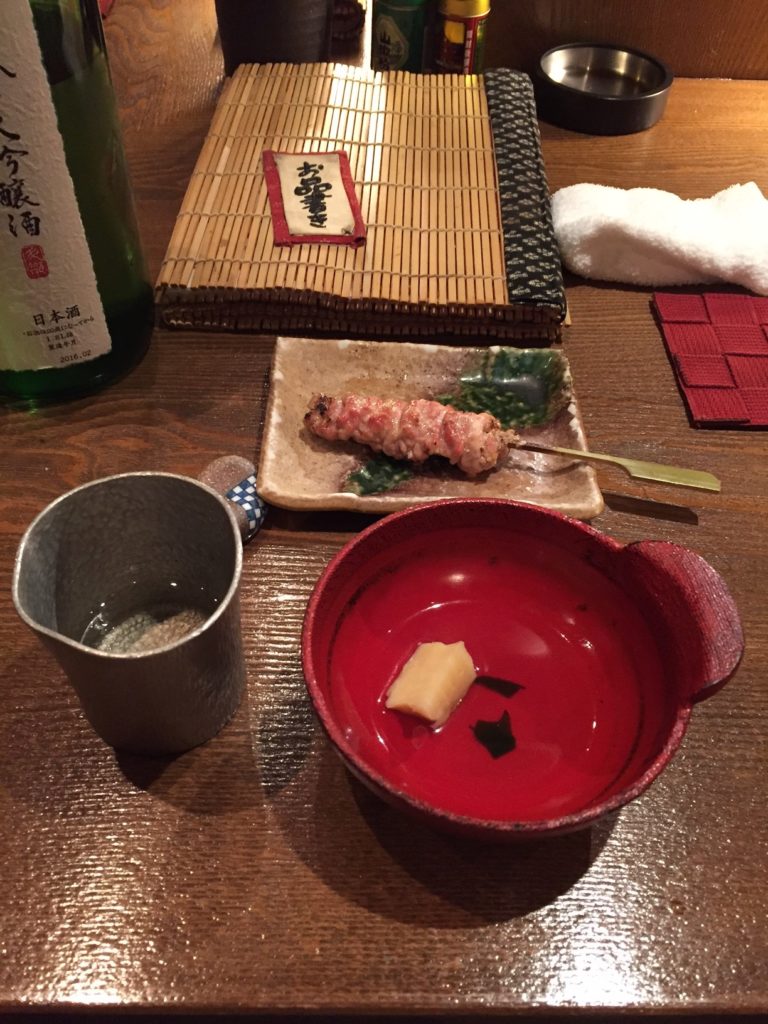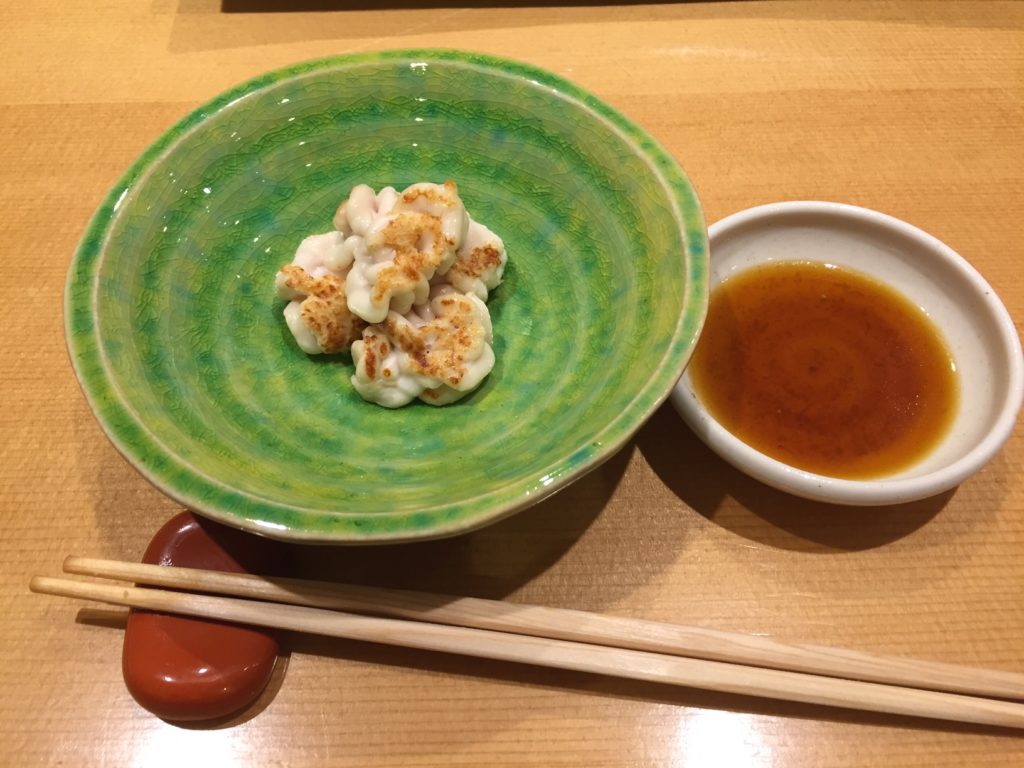Turning Japanese
With the debut Notebook, a collection of excepts from my daily journal entries, I hope to share what is unfolding at Melville on a regular basis. I’ll be writing about life in the cellar, the vineyard, at home with my family and on the road, when I’m working the market on behalf of our estate wines. Please feel free to hop along for the ride whenever you’re looking for a little something to read to pass the time.
Earlier this year, I traveled to Japan on behalf of our family winery, to represent Melville at various dinners and tastings. Here are a few recollections from my trip:
Japanese culture is one based upon respect. For example, when I got to Tokyo, I noticed a lot of people wearing face masks. There are essentially three reasons why people often choose to wear face masks in Japan. The first is perhaps the most obvious; they don’t want to get sick from air-borne illnesses. Secondly, they often wear masks because of the pollution in Tokyo, and some of Japan’s other bigger cities, or because of a particularly bad allergy season. But, the third reason is the one I found most compelling and interesting; as an act of courtesy. If one is sick in Japan, one will often wear a mask to protect others from one’s illness. That gesture is borne out of respect.
The Japanese don’t shake hands, either: they bow. And, the deeper the bow, the greater the respect being demonstrated. I mean think about that; when you extend your hand to someone, that’s a friendly gesture, to be sure, but still, it’s just extending a hand. But, to prostrate oneself from the waist up for another human being is a pretty big demonstration of respect and humility. Most every time I left a restaurant, someone on the staff there would walk me out, and then bow as I left. What a cool way to finish a meal!
I’m a hugger myself and my first impulse was to hug our hosts each time we concluded a visit. I asked one of my hosts if that was an affront to the Japanese people, because if it was, I was very willing to bow myself. He explained that the Japanese people respect others when they do what is comfortable for themselves. I thought about that for a moment. When Japanese people visit the winery, they always bow upon departure, and I love that, as that is a part of their culture. Wanting to demonstrate my culture a little, I took to hugging out hosts along the way, and that made for some warm and friendly cultural exchanges.
When you’re part of a culture whose underlying tone is one of respect, you’re just going to naturally have some good systems in place. Of course, there are bad apples everywhere, and there’s crime everywhere in the world, to be sure, but the thing about Japan that was really interesting to me was this sense of organization, orderliness and again, respectful behavior that permeated every aspect of everyday life there.
When I departed my hotel in Tokyo for the first day of exploring, I immediately noticed that taxi cab drivers in Tokyo wear suits, ties, a hat and white gloves. In the US, we view taxi cab drivers as hard workers, but we also view their job as somewhat menial; it’s a tough job that probably a lot of folks wouldn’t choose to do if they could do something else. I don’t know what kind of salary cab drivers make in Japan, but they have so much pride in their work. The cabs are very clean and the cabbies there comport themselves with such dignity that my perception of the “cab driver” job was immediately elevated. Witnessing first-hand the level of pride so many Japanese have in their work, no matter what it is, was a very humbling experience. It made me want to always consider the human first, and their line of work, second. By imbuing their work with dignity, Japanese workers make work itself a dignified undertaking.
If you’re a food lover like me, you’ll find the food scene throughout Japan to be spectacular. Precision and Intent; these are the two underlying principles that pretty much inform the food culture of Japan. All of the food I ate there was presented very thoughtfully and beautifully. More often than not, the presentation of the food was exceedingly simple, clean and unadorned.  Some of my favorite eateries to visit there were Yakitori restaurants; restaurants that are basically devoted to one dish; chicken on skewers. A lot of these restaurants are no bigger than my office here at the winery. Two people typically work the floor in these small places and you might find three more people in the kitchen. They use every single part of the chicken at these restaurants, and cook it, Yakitori style…on skewers over hot coals. I ate chicken butts; six butts on a skewer. They were awesome! Chicken gristle skewers; those were super crunchy and weird texturally, but very delicious. Chicken hearts. Chicken livers. You name it. Everything but the cluck.
Some of my favorite eateries to visit there were Yakitori restaurants; restaurants that are basically devoted to one dish; chicken on skewers. A lot of these restaurants are no bigger than my office here at the winery. Two people typically work the floor in these small places and you might find three more people in the kitchen. They use every single part of the chicken at these restaurants, and cook it, Yakitori style…on skewers over hot coals. I ate chicken butts; six butts on a skewer. They were awesome! Chicken gristle skewers; those were super crunchy and weird texturally, but very delicious. Chicken hearts. Chicken livers. You name it. Everything but the cluck.
I went to another restaurant that served seafood tempura exclusively. That’s all they did. The chefs there were probably in their 70’s…maybe 80’s. The tempura recipe at this particular restaurant—and this is probably the case for many restaurants in Japan—is the same family recipe that’s been passed from generation to generation. The recipe includes not only how to make the batter, but mentions the oil that must be used and at what temperature everything must be prepared. That is where the precision comes in; very few things seem to happen accidentally in Japan. It’s a culture steeped in intentionality and the precision borne of paying very close attention to all that one does.
We talk about seasonality here in the US. Certainly, in Japan, the concept of seasonality reaches beyond any kind of foodie trend. In all the cities I visited, including Tokyo, Sapporo and Asahikawa, seasonality is an inherent part of their food culture history. When I was in Japan, cod sperm was in season, and I ended up having it on various occasions, because I enjoy ordering Omakase: this means that you’ll essentially agree to have whatever the chef prepares for you, and that you do not need a menu.  When you order Omakase, it’s important to eat everything that you order. If you do not, it can offend your host or the chef; both which take great pride in their work. So, I was served these sperm sacks on several occasions when I ordered Omakase, a delicacy that’s only in season for 6 weeks out of the year, and it was really sublime.
When you order Omakase, it’s important to eat everything that you order. If you do not, it can offend your host or the chef; both which take great pride in their work. So, I was served these sperm sacks on several occasions when I ordered Omakase, a delicacy that’s only in season for 6 weeks out of the year, and it was really sublime.
What resonated with me most about Japanese food culture, though, is that much of what I ate was served raw and unadorned. As a winegrower and winemaker, I choose not to use adornments in the cellar; from the most egregious additions, like color enhancers, which we have never used at Melville, to more accepted additions, like brand new oak barrels. We choose to pursue our wines in as unencumbered a fashion as possible so that we’re ultimately offering up the taste, if you will, of our estate terroir, pure and unadulterated. Similarly, in Japan, the food there reflects the terroir of their ocean and land life in astonishingly intimate ways; they don’t use a lot of heavy cream sauces, tons of butter and salt, and other adornments that can often mask, rather than elevate, a main ingredient. The best meals I had there were extremely minimal. It was exciting to pair Melville wines with these very simple, fresh dishes; the chefs and I could draw parallels between our creative choices and processes, and that was nothing short of life affirming.
I also really enjoyed learning about sake, and was able to draw even further parallels between sake making and winemaking. The best sake breweries pay great attention to how the rice is milled, the clone of the rice, and other process-oriented decisions that are similar to fine winemaking. One big difference between sake breweries and wineries, though, is that sake makers worship a sake deity. In every sake house we visited, the sake purveyors maintained an altar to the sake deity. They bow to it every morning and say a little meditative prayer to it before they go about their day. The closest thing to a deity that we have at Melville is Mother Nature; we worship her, too. Maybe I should build her some kind of altar at the winery.
I’m very much looking forward to my next visit to Japan. I made some great new friends there, and I discovered a culture and people about which I’d long been intrigued, but that I’d only really known from books and movies. Being able to immerse myself in that culture, if only for a couple of weeks, inspired me greatly. Since returning to the states, I’ve made an effort to stay present during all of my daily tasks in the vineyard and in the cellar. I’m more mindful now and apply more precision and intentionality to my own work. If for no other reason, traveling the globe allows us to learn from other cultures and to be enriched by them in the process.


